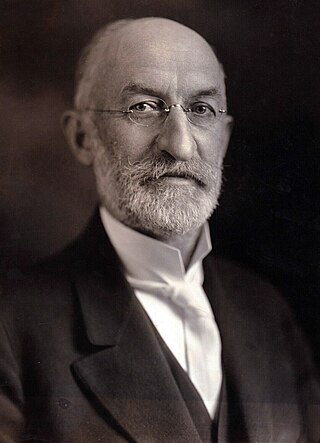
Heber Jeddy Grant was an American religious leader who served as the seventh president of the Church of Jesus Christ of Latter-day Saints. Grant worked as a bookkeeper and a cashier, then was called to be an LDS apostle on October 16, 1882, at age 25. After the death of Joseph F. Smith in late 1918, Grant served as LDS Church president until his death.
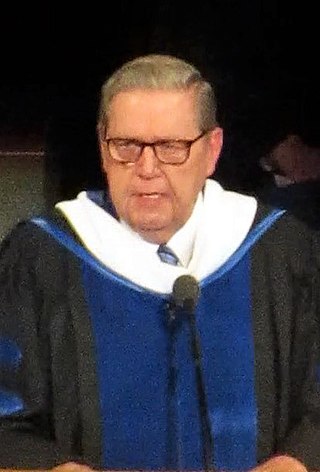
Jeffrey Roy Holland is an American educator and religious leader. He served as the ninth president of Brigham Young University (BYU) and is the acting president of the Quorum of the Twelve Apostles of the Church of Jesus Christ of Latter-day Saints. As a member of the Quorum of the Twelve, Holland is accepted by the church as a prophet, seer, and revelator. Currently, he is the third most senior apostle in the church.

Charles William Penrose was a member of the Quorum of the Twelve Apostles of the Church of Jesus Christ of Latter-day Saints from 1904 to 1911. Penrose was also a member of the First Presidency, serving as a counselor to church presidents Joseph F. Smith and Heber J. Grant from 1911 until his death.
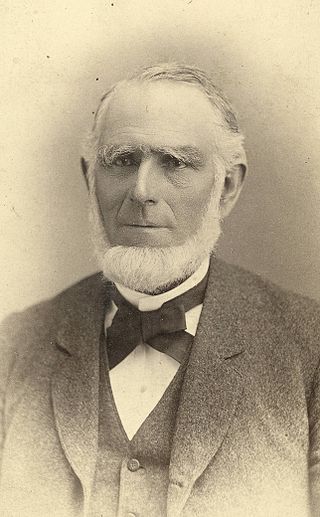
Abraham Owen Smoot was an American pioneer, businessman, religious leader, and politician. He spent his early life in the Southern United States and was one of seven children. After being baptized a member of the Church of Christ, predecessor to the Church of Jesus Christ of Latter-day Saints, Smoot served as a missionary in Kentucky, Tennessee, South Carolina, and England. He received no formal education, but learned to read as a child and later attended the School of the Prophets in Kirtland, Ohio. Like other early members of the LDS Church, Smoot practiced plural marriage, eventually marrying six women and having 24 children. After migrating west to Utah Territory, he was elected as the second mayor of Salt Lake City and maintained this position from 1857 to 1866. He was then assigned by Brigham Young to move to Provo, where he served as stake president and mayor from 1868 to 1881. He assisted financially in the construction of the Provo Tabernacle—today the Provo City Center Temple—as well as that of the Utah Southern Railroad. Smoot was the first president of the board of trustees of Brigham Young Academy (BYA)—which later developed into Brigham Young University (BYU). He was an early financial supporter of the institution and was nicknamed the "foster father" of the academy. His goal was to make education available to young Latter-day Saints. Today, the Smoot Administration Building at BYU is named after him.
Merrill Joseph Bateman is an American religious leader who was the 11th president of Brigham Young University (BYU) from 1996 to 2003. He is an emeritus general authority of the Church of Jesus Christ of Latter-day Saints and was the LDS Church's 12th presiding bishop in 1994 and 1995. Bateman was the Sunday School General President of the LDS Church from 2003 to 2004, a member of the Church's Presidency of the Seventy from 2003 to 2007, and the president of the Provo Utah Temple from 2007 to 2010.
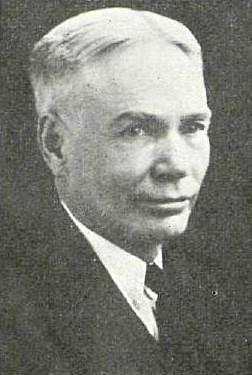
Bryant Stringham Hinckley was an American author, religious speaker, civic leader and educator. He served as a prominent mid-level leader in the Church of Jesus Christ of Latter-day Saints in the early 20th century. His books were primarily designed for a Latter-day Saint audience.

Leonard John Nuttall Sr. was a private secretary for John Taylor and Wilford Woodruff, and was a member of the Council of Fifty who kept a detailed journal of the early history of the Church of Jesus Christ of Latter-day Saints.

Henry Dixon Taylor was a general authority of the Church of Jesus Christ of Latter-day Saints from 1958 until his death.
George Wendell Pace was an American professor of religion at Brigham Young University (BYU) in Provo, Utah. He was a popular writer and speaker on religion in The Church of Jesus Christ of Latter-day Saints and part of a public criticism voiced by Apostle Bruce R. McConkie in 1982.
Arnold Kent Garr was the chair of the department of Church History and Doctrine at Brigham Young University (BYU) from 2006 to 2009. He was also the lead editor of the Encyclopedia of Latter-day Saint History.

Stephen L. Chipman (1864–1945) was a member of the Utah State Legislature in 1903 and a leader in the Church of Jesus Christ of Latter-day Saints in Utah County. He was also the first president of the Salt Lake Temple who was not also an apostle in the LDS Church.

Harvey L. Taylor was an administrator over all schools other than Brigham Young University (BYU) within the Church Educational System of the Church of Jesus Christ of Latter-day Saints from 1964 until 1970. He was vice president of Brigham Young University (BYU) from 1957 until 1964, when he became acting Chancellor of the Unified School System.

Joseph Brigham Keeler was an American teacher and administrator at Brigham Young Academy (BYA) and then Brigham Young University (BYU). He was for a time a counselor to George H. Brimhall when the school had a presidency similar to other LDS Church Presidencies.
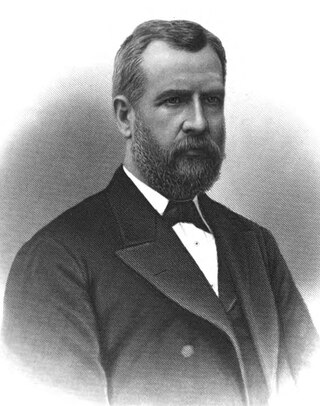
William Budge was a member of the Council of Fifty as well as the Idaho Legislature and was a mission president and stake president in the Church of Jesus Christ of Latter-day Saints.

Harvey Harris Cluff (1836–1916) was a business, civic and educational leader in late-19th-century Provo, Utah.
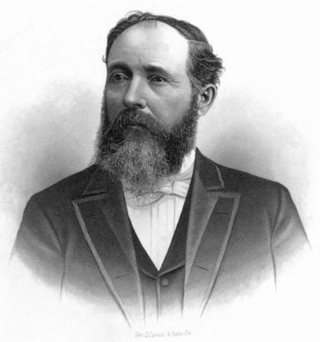
David John was a leading figure in Utah at the dawn of the 20th century. He served as a stake president in the Church of Jesus Christ of Latter-day Saints and a member of the Brigham Young University (BYU) board of trustees.

William F. Edwards was a businessman and educator who held the Driggs Chair of Finance at Brigham Young University (BYU).
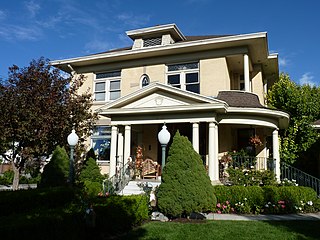
The Thomas N. Taylor House is a historic house located at 342 North 500 West in Provo, Utah. It is listed on the National Register of Historic Places.
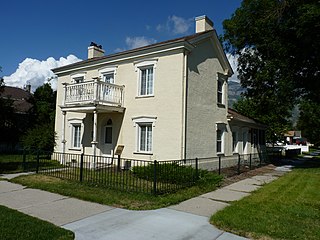
The Clark–Taylor House is a historic building located in Provo, Utah, United States. It is listed on the National Register of Historic Places. It has also been known as the T. N. Taylor Home. One of the oldest pioneer buildings in the state, the Clark–Taylor House was built around 1854. Thomas N. Taylor, a Provo Mayor, LDS bishop, and stake president, along with being a chairman of the board of trustees of BYU, lived in this home. The Clark–Taylor House was designated to the Provo City Historic Landmarks Registry on March 7, 1996.
Paul Kay Sybrowsky was the president of Southern Virginia University (SVU) from June 1, 2012 until August 31, 2014. He was a general authority of the Church of Jesus Christ of Latter-day Saints from 2005 until 2011. He also served as a commissioner of the Northwest Commission on Colleges and Universities and chairman of the board of trustees of Utah Valley University.















